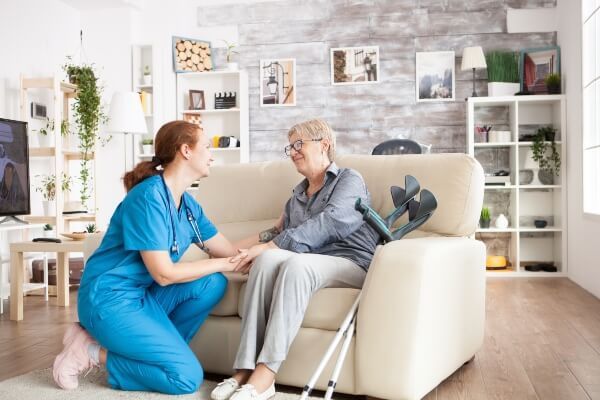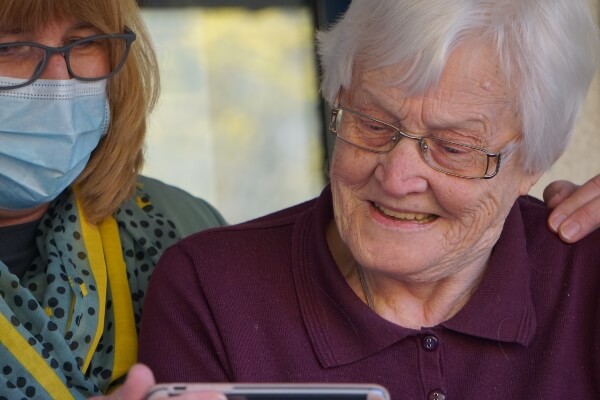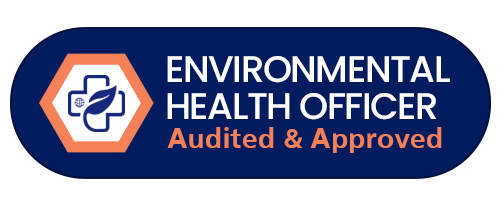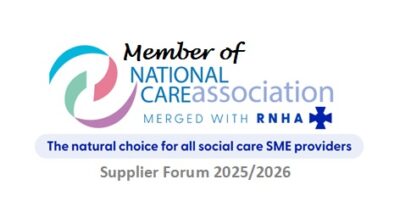Reporting Safeguarding Issues in Care Homes – How to Ensure Appropriate Care
Reporting safeguarding issues in care homes is the first step to resolving them and protecting residents from abuse, harm and neglect. This guide explains how to report safeguarding issues in care homes and highlights the duties of different authorities when dealing with them.
Why is Safeguarding Vital in Care Homes?
Safeguarding means protecting vulnerable people from abuse, harm or neglect to conserve their health, well-being and independence. Care home residents cannot manage their health or decisions, so they require safeguarding. It prevents hazards like:
- Falls
- Poor food hygiene
- Illnesses
- Physical abuse
- Verbal abuse
- Burns from hot surfaces or substances
- Medication misuse
- Malnutrition
Your Responsibilities
Everybody involved in safeguarding has a responsibility to report and resolve concerns. That includes concerns they hear about but do not witness.
Residents and Families
Residents, their families and other members of the public can report safeguarding concerns to their local council and the care home’s management team.
Care Workers
As care workers are the frontline team helping residents, they usually have the best view of hazards within the care home. They must report safeguarding issues to their manager and go to senior management if the poor practice continues.
Care workers can also report problems to the local authorities or the Care Quality Commission. These bodies are often the best option if they believe that the care home’s management is deliberately ignoring signs of abuse, harm and neglect. The care home must have a whistleblower policy to protect people that reveal hidden issues.
Line Managers
As a line manager, you will likely receive alerts about safeguarding issues. You are legally obligated to record and resolve these reports, including training staff about policy changes to prevent reoccurrences. You also must notify senior management.
Local Authorities
Investigating safeguarding concerns is the local authority’s responsibility and helps regulate the care homes in their jurisdiction. They can suspend staff during the investigation and recommend necessary changes after completion. If they find evidence of a crime, they must report it to the police.
Care Quality Commission
As the body regulating the actions of every adult health and social care institution in England and Wales, the Care Quality Commission (CQC) has the power to close care providers that do not meet their standards.
Assessing a Situation
When you have concerns about safeguarding practices and issues, you should consider the situation holistically. Look for:
- The vulnerable person wishes
- Their religious or cultural beliefs
- Their ability to make decisions or communicate
- Their appearance
- Their nutrition, including hydration
- Frequent medical appointments
- Missed health appointments
- Inconsistent reporting
- Existing safeguarding issues regarding that person or institute
How to Record a Safeguarding Concern in a Care Home
Accountability is one of the six fundamentals of safeguarding, highlighting the importance of detailed record-keeping. It maintains a clear picture and timeline of care that every party can access and understand so that they know exactly how vulnerable people’s needs are being met. You are responsible for your actions and any omissions from the record.
You may have multiple ways of recording concerns, ranging from regular shift reports to individual incident logs. Every record should be impartial; only note what you see, not what you feel. Your log could be crucial evidence in an incident investigation, so make it clear and objective. Include times, dates, locations and full names.
Then you should consider what to record. Remember that tracking poor practices is just as important as reporting abuses, as they can easily build up and cause serious issues. Think about how someone’s appearance or actions could indicate abuse. Do they shy away or change behaviours when another person arrives in the room or when others are watching? Do they look increasingly tired or thin?
Keep all your records in a secure, safe place that can be easily accessed; you have confidentiality obligations and must abide by GDPR. Regularly monitoring them highlights any necessary changes in your policies or training. If you notice a dramatic increase in one type of concern from one quarter to another, you should evaluate your procedures to find the cause.
How to Report a Safeguarding Concern in a Care Home
If there is a reporting process in place that you feel comfortable following, you should do so. We have already outlined where different people should report to, but remember that you can always go straight to the local authorities if required.
Report the concern at the earliest opportunity so that it does not continue. Then follow the guidelines of the policy. Typically, you will have to submit a report detailing what you saw, so keep it simple.
Whistleblowing Policy
People can feel pressure to stay silent about safeguarding concerns for many reasons, but coming forward and reporting them to the appropriate authorities is vital for the safety of care home residents. To ensure residents, family members and staff can raise concerns without fearing negative consequences, every care institution must have a whistleblowing policy. The Public Interest Disclosure Act 1998 protects them.
Responding to an Alert and Investigating Concerns
The safeguarding lead is responsible for handling concerns and alerts. If that is you, start by asking the resident at risk what they would like to do next, explain that you must report the issue to local authorities and specify whom you will tell, why and when. You must also provide appropriate communication networks to support the affected resident.
Consider the broader context of the incident. Does it affect anyone else? Are these recurring issues? Is there a current or past power imbalance between the resident and the alleged perpetrator? Has a crime been committed?
After doing so, if you believe that abuse or neglect has occurred, you must make a safeguarding referral to the local authorities under the Care Act 2014. If you are unsure, you can discuss it with the local authorities before making the referral.
The local authority will then consider whether the referral meets the legal requirements to launch a Section 42 Safeguarding Enquiry. If it does, they will consult any relevant party, depending on the situation. If it does not require an enquiry, they should discuss and recommend additional support with the care home and the resident to meet all their care needs.
Sharing Information
Information is central to reporting and resolving safeguarding issues within care homes. However, you must handle it sensitively. If you record information or share it with other parties while raising a concern, you must follow GDPR to maintain the privacy of those involved.
Always remain honest and open with the resident in the concern (and their family where appropriate). They must know what, why, how, when and with whom information is being shared. Seek their consent wherever possible unless doing so would place them at risk.
Learn How to Safeguard Today
Reporting safeguarding issues in care homes is everyone’s responsibility. If you want to boost your career or learn how to care effectively, choose a Caredemy online course. We have several CPD-accredited safeguarding training courses available to help you support adults and children..
With flexible learning options, you can take the courses individually or in groups, making them perfect for both personal growth and workplace training sessions. Plus, they start from just £5.
If you want to advance your care skills, enrol online now. Or contact our experts, who can explain the best course for you.
FAQ
How should I report a safeguarding concern in a care home?
You can report a safeguarding concern in a care home to the management staff or directly to the local authorities.
Do I need consent to report a safeguarding issue in a care home?
Yes, you can report an issue without the consent of the affected resident. However, you must notify them about the report unless doing so is unsafe.
Should I report safeguarding concerns to CQC?
Local authorities and care providers report safeguarding concerns to CQC. Members of the public should contact their local council.













